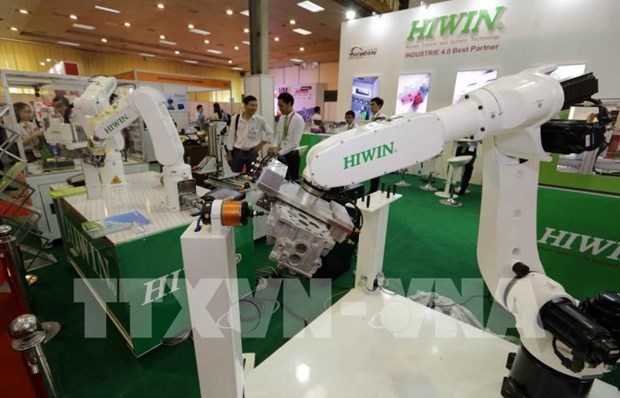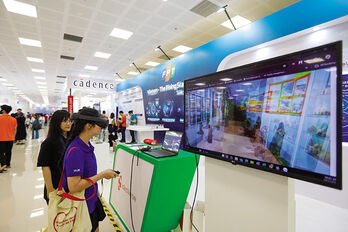
Illustrative photo. (Source: VNA)
The strategy’s objectives are to take full advantage of opportunities presented by the Fourth Industrial Revolution; fundamentally master and widely apply new advanced technologies in different social and economic aspects; gradually develop new technologies in support of renewing Vietnam’s growth model and promoting economic restructuring in tandem with the implementation of strategic breakthroughs and national modernisation; and accelerate growth of the digital economy.
The strategy also aims for the country’s robust and sustainable development based on science-technology, innovation and high-quality human resources; improvement in life quality, social welfare and people’s well-being; firm safeguarding of national defence and security and protection of environment and eco-system; enhancement of international integration effectiveness and use of high technology in ensuring cyber security.
Under the strategy, Vietnam expects to be named among the 40 top performers in the Global Innovation Index (GII), the top 30 in the International Telecommunication Union (ITU)’s Global Cybersecurity Index (GCI) and the top 50 in the United Nations (UN)’s e-Government Development Index (EGDI) by 2030.
The country also targets the digital economy contributing to 30 percent of the GDP, productivity expanding 7.5 percent annually in average, universal access to fiber-optic Internet and 5G services, the completion of digital government development, and the establishment of smart cities in key economic zones across the north, central and southern regions which will be connected with the regional and global networks of smart cities.
To this end, Vietnam plans to further accelerate development of infrastructure, database, and human resources; build e-Government towards a digital government; enhance national innovative capacity; develop a number of priority technologies for the active engagement in the Fourth Industrial Revolution such as robotics, advanced materials, renewable energy, artificial intelligence (AI), Internet of Things (IoT), big data and blockchain. The country will also expand international cooperation and integration in science and technology, particularly priority technologies.
Additionally, the strategy is to step up the development of high-speed Internet services and secured digital infrastructure to meet demand for big data connection and processing; the application of digital technology in State governance and delivery of public services in all areas; and building of the real-time information system to support the Government’s governance and administration./.
VNA
 Vietnamese enterprises in race to build AI market
Vietnamese enterprises in race to build AI market



